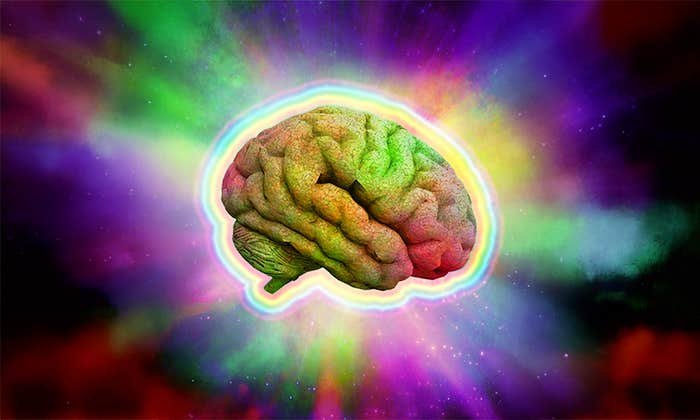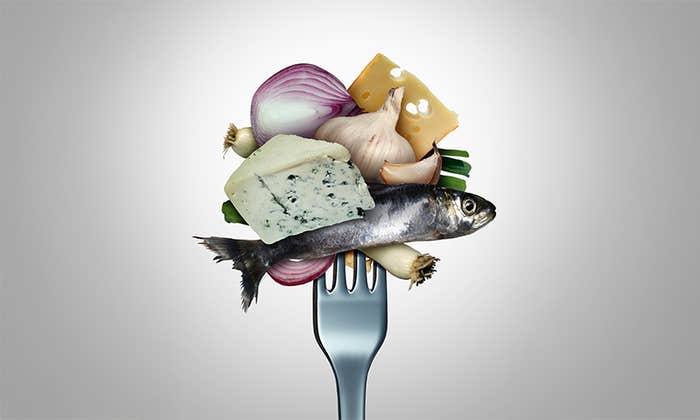Helen Fisher first appeared in Nautilus in 2015 with her article, “Casual Sex May Be Improving America’s Marriages.” Since then we’ve interviewed the biological anthropologist a host of times, anxious to hear her insights into the ties that bind and fray. Fisher made her name in popular science in 1992 with her book, Anatomy of Love, tracing the evolution of love from prehistoric to neuroscientific times. She’s the author of other books including Why Him? Why Her? Today she’s a senior research fellow at the Kinsey Institute and chief scientific advisor to Match.com.
Fisher’s research has found its way into many articles and books about the science of love and sex, including Love Drugs, a provocative new book by Brian D. Earl and Julian Savulescu, also featured this week in Nautilus. We could hardly create a Nautilus issue about love and sex without her voice. Her comments below represent her key points about the biology of love and sex, and are often counterintuitive and surprising. They are drawn from my interviews with her and presented on their own under short headings.
I Love You, Doctor
We put over 100 people who were madly in love into a brain scanner using fMRI. We noticed those who had fallen in love in the first eight months had a lot of activity in brain regions linked with intense feelings of romantic love. Those who had been madly in love for a longer period of time—from eight to 17 months—showed additional activity in a brain region linked with feelings of deep attachment. That vividly showed us the brain can easily fall happily and madly in love rapidly, but feelings of deep attachment take time. Romantic love is like a sleeping cat: It can be awakened at any time. But attachment, those feelings of cosmic, deep, profound love for another person, takes time.
The brain can easily fall madly in love rapidly, but feelings of deep attachment take time.
It has long been an argument in science. “Is it all just general structures and then your environment says, ‘Oh, this feeling is romantic love, and this feeling is that I like chocolate?’ Or are there specific regions in the brain?” Both are true. Under some circumstances, your culture tells you how you’re supposed to interpret a reaction, and that’s a general brain response. In other circumstances, it’s not going to be cultural—it’s going to be some Darwinian mechanism that triggers a certain part of the brain along with basic brain structures—a very individualized brain system that has evolved for very particular reasons.
A most amazing moment for us was a study of people who were epileptics. They had the brain open, and every single time that they had an electrode stimulation to a certain region of the caudate nucleuses, which is part of the “wanting” system, the patient would turn around and say he loved the doctor. So there are particular brain regions that seem to be directly associated with particular emotions. We know the mirror neurons are linked with empathy. We know a brain region is linked with social conformity. We know certain brain regions are linked with math skills.
Commitment Lite
We’ve evolved three distinct brain systems for mating and reproduction: sex drive; feelings of romantic love; feelings of deep attachment. Generally speaking, people tend to fall in love first and slowly build a deep attachment to somebody. But you can know somebody at work, learn to respect them, understand their sense of humor, and begin to feel a deep sense of attachment to them. You’re not in love with them. You’re living with somebody else or married to somebody else, and so are they. Times change, they become single, you become single, and all of a sudden after a long period of deep attachment, that brain circuitry for romantic love can become triggered and you’ll fall madly in love.
You can trigger the brain circuitry for romantic love and suddenly you’re off to the races with the wrong girl or boy.
I don’t think you ever know when to make that jump into attachment. The brain simply does this naturally. We’re built to form a deep attachment to another human being, to raise our babies. Forming a pair bond is a hallmark of the human animal. Ninety-seven percent of mammals do not pair up to rear their young, but people do. A girlfriend—she’s been happily married for over 50 years—said to me about her husband, “Sometimes I hate him, but I always love him.” What she’s saying is that feeling of eternal deep attachment to another human being is easily felt over the long term.
I like the term “commitment-lite.” We gradually move into a heavier duty form of commitment. Everybody now is taking their own time, which is so beautiful. The fact that we can build our partnerships any way we want to build them enables individuals to express love in their own way, according to their own time, and make up their decisions in logical ways that build a partnership. Some people will become attached almost instantly, perhaps even within a few days, and for others it can take quite a while. Attachment can grow in any way.
I don’t think sex is the main reason that bonds us. There’s much more than sex in a partnership. There are all kinds of people who have said to me that they’ve had better lovers than their husband, but they’ve never had somebody who was as funny, as smart, as kind, as good with the children, as productive around the home. There’s many reasons that you stay in a relationship. Sex may be important for some people and a minor thing for others.
Not for Kids
Sex is a very powerful brain system. A great deal of the brain just absolutely shuts down while you’re having an orgasm. You immediately stimulate five of the 12 cranial nerves. You really see the person, smell the person, feel the person, taste the person, touch the person. The brain is absorbing a great deal of data. Any stimulation of the genitals can trigger dopamine activity and push you over the threshold into falling in love. With orgasm, there’s a real flood of oxytocin and vasopressin, brain chemicals linked with feelings of deep attachment.
Sex is the road to reproduction and the road to sending your DNA on into tomorrow. But it triggers the brain circuitry for romantic love and deep feelings of attachment, even though you have no intention of having children. These are primitive brain systems that evolved long, long ago, and they will be with us as long as we survive as a species. They’re not going to change. Just like the fact that we tend to eat meat. The tendency to eat meat, the drive to eat meat, the craving to eat meat—all of the bodily abilities to eat meat evolved 2 million, if not 4 million, years ago. We have these embedded deep in the brain.
And sex is good for a lot of things other than having children. It relaxes you. It’s very good for bladder control and it’s good for the eyes. It’s good for the skin. It’s good for the muscles. It’s good for breathing. It’s good as an antidepressant. There are many chemicals in seminal fluid, including dopamine, serotonin, testosterone, estrogen, FSH, LH—various chemicals that keep the body in good shape. Sex is good for you with the right person, even if you don’t have babies, and even if you don’t want to see that person tomorrow.
Sex Is Dangerous
You learn a great deal about a human being between the sheets; and not just size and shape and smell and taste and touch and sounds. You learn how flexible they are, whether they can change some of their habits to be attentive to you, whether they’re eager to please you, whether they can listen, whether they can respond to your needs. An awful lot of people are having casual sex to get to know somebody as rapidly as they can before they become too attached to them and find that this is not the right person for them. But you can have casual sex with somebody you don’t like or don’t respect or don’t trust, and you can trigger the brain circuitry for romantic love and feelings of attachment and suddenly you’re off to the races with the wrong girl or the wrong boy.
Sex is good for a lot of things other than having children. It’s good for bladder control and for your eyes.
You spend a lot of metabolic energy when you have sex. So it’s dangerous. You’re very close to somebody and they could stab you in the back. It’s also dangerous because you could fall in love. A friend of mine, Dr. Justin Garcia, did a study of one-night stands and hooking up. He asked various people why they went into it and 51 percent of both men and women said it was because they wanted to get to know the person better. So casual sex is rarely casual. There’s some motive. I’ve taken testosterone just to see what happens, and I understand the problems of teenage boys, and the bottom line is it’s entirely possible that some of them are into it just for the sex. But I think as you get older and you realize that sex is time-consuming, it’s energy consuming. You want to have sex with somebody you at least have a friendship with, or would like to make a friendship with.
Flock Together
We’ve evolved four broad styles of thinking and behaving linked with the dopamine, serotonin, testosterone, and estrogen systems: Explorer, Builder, Director, Negotiator. We found people are drawn to those with the same style of thinking and behaving themselves. Explorers, people expressive of the dopamine system, tend to be novelty seeking, risk-taking, curious, creative, spontaneous, energetic, mentally flexible. They want somebody who’s going to get off the couch and go off to Paris for the weekend with just their toothbrush. Those who scored high on the serotonin scale, Builders, are people who are traditional, conventional; they follow the rules, they respect authority, they like schedules and plans. They tend to be religious. We found activity in a tiny brain region that is linked with social norm conformity, which is the main characteristic of the serotonin system. For the other two personality styles—those expressive with the testosterone scale and those expressive of the traits linked with estrogen—we found more activity in brain regions not only linked with analytical thinking and mathematical thinking, but also built by fetal testosterone. Those who scored high on estrogen scales showed more activity in the mirror neurons—linked with empathy—and other brain regions built largely with estrogen.
Biology at the Wheel
The brain is very flexible. I have long believed the more we understand our biology, the more we will come to realize the power of cultural forces to change that biology, to change behavior. We can change our behavior. Some people are predisposed to alcoholism and give up drinking. Some people are predisposed to eating too much and putting on weight and they stop eating. Some people tend to be lazy and they get to work every day and are very creative.
There’s going to be some behaviors that have nothing to do with biology. If you grew up in a Muslim household and that’s what you learned, you’re going to be a Muslim. I don’t think that has to do with biology. If you grew up in a Christian household, you’re likely to be Christian. I don’t think that has to do with biology. Whether you believe in this god or that god, that’s culture. Whether you believe in god or do not believe in god, that’s biology.
Everything has a biological component. When you’re cooking dinner, there’s a biological component. When you’re laughing at a joke, there’s a biological component. When you’re having a new idea, there’s a biological component. Can you drive around in a car without the car? I don’t think so. You’ve got to have the car, you’ve got to have the brain.
We know you can get the same printout, the same behavior, from different brain pathways. But the bottom line is we are able to eat the same food, take many of the same drugs like aspirin, or drink beer, and have the same reaction. We are the same species and there’s much in the brain that works in a relatively standard way. We’re learning those standards and we’re going to learn the exceptions. But we all came from the same stock. A long time ago, you and I were sitting around a campfire in northern Africa and one day you and I decided we would go north, follow the bison. Sure enough, we migrated into northern Europe. Our friends stuck around and stayed in Africa. But we’re still the same.
Kevin Berger is the editor of Nautilus.
Lead image courtesy of Helen Fisher.


























